Acoustic Insulation for Recording Studios
Introduction
Creating an optimal recording environment involves understanding the significance of acoustic insulation and soundproofing. Acoustic insulation is a pivotal factor in controlling sound within a space, ensuring that unwanted external noises are kept at bay and minimizing sound leakage from the studio. To achieve this, various considerations come into play. Materials like Mass-Loaded Vinyl (MLV), acoustic panels, and bass traps contribute to soundproofing and improving internal acoustics. Techniques such as decoupling and double stud walls help isolate the studio structure. Ceiling clouds and carpeting address sound reflections and impact noise.
Professional assessments from acoustic experts can provide tailored solutions. Regular maintenance ensures the continued effectiveness of acoustic materials. Striking a balance between quality and cost is crucial when investing in acoustic insulation. In essence, a well-insulated studio enhances recording quality, making Acoustic Insulation for Recording Studios an indispensable aspect of any music enthusiast’s or professional artist’s setup.
Understanding the concepts of Acoustic Insulation for Recording Studios
1. Soundproofing vs. Acoustic Treatment:
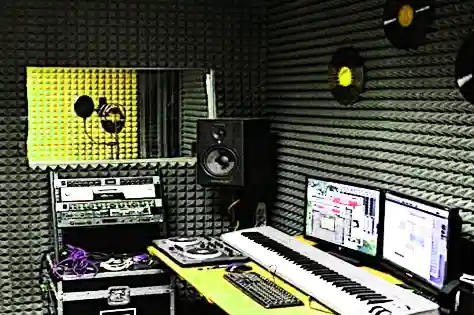
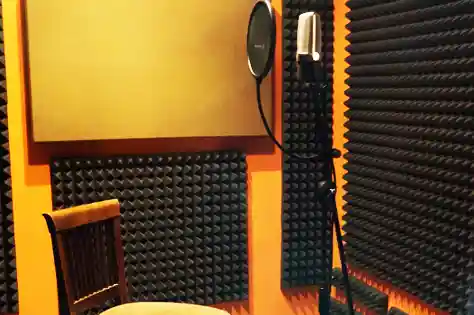
In the realm of recording studios, understanding the distinction between soundproofing and acoustic treatment is crucial for creating an environment that fosters optimal audio quality.
Soundproofing is the first line of defense, aiming to prevent the infiltration of external noise or the escape of internal sounds. This process involves constructing a barrier that acts as a shield against unwanted disturbances. Mass-Loaded Vinyl (MLV), double stud walls, and sealing gaps are common soundproofing techniques. The goal is to isolate the studio, ensuring that external sounds do not interfere with the recording process and the internal sound does not travel outside the room and disturb your neighbors.
On the other side, acoustic treatment focuses on refining the sound quality within the studio itself. It addresses issues like echoes, reverberation, and standing waves that can compromise the clarity of recordings. Acoustic treatment employs materials designed to absorb or diffuse sound, such as acoustic panels and bass traps. These strategically placed elements help control the acoustics of the room, creating an environment where the true essence of the music can be captured.
The synergy between soundproofing and acoustic treatment is paramount. While soundproofing safeguards the studio from external disturbances, acoustic treatment polishes the internal acoustics for an unparalleled recording experience. Striking the right balance between these two aspects is essential for achieving a harmonious recording environment. Whether you’re a music enthusiast or a professional artist, investing in comprehensive Acoustic Insulation for Recording Studios ensures that your studio becomes a sanctuary for authentic and pristine sound production, free from external interference and optimized for superior recording quality.
2. Types of Acoustic Insulation for Recording Studios
a. Mass Loaded Vinyl (MLV)
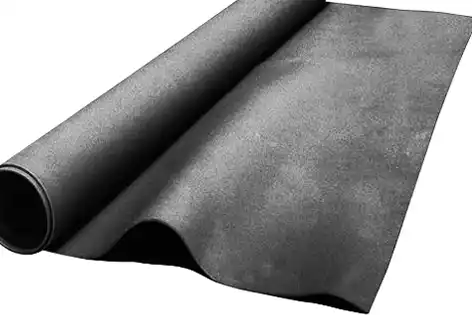
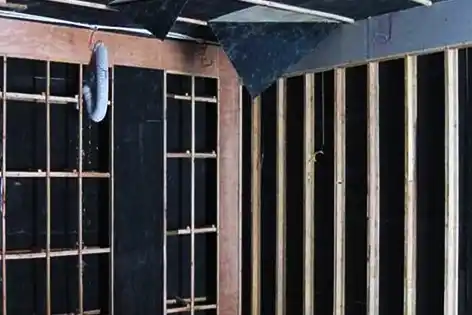
A heavyweight champion in the realm of soundproofing, MLV is akin to a dense, rubber-like material that acts as a barrier against unwanted noise. Applied to walls, floors, and ceilings, it adds substantial mass, effectively impeding the transmission of sound and vibration control. This makes MLV a go-to choice for creating a fortified shield, ensuring that external disturbances remain at bay, allowing artists and recording professionals to focus on capturing the pure essence of their music.
b. Acoustic Panels
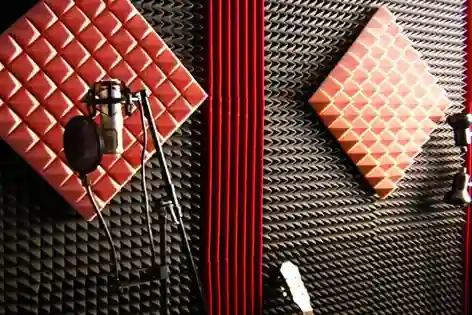
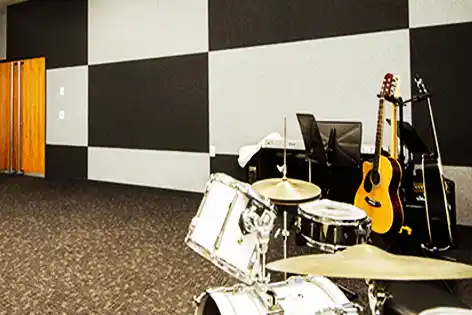
These panels are versatile and integral components of acoustic treatment. Crafted to absorb sound reflections within a room, they play a pivotal role in enhancing clarity and reducing unwanted reverberation. Acoustic panels are strategically placed to target specific areas where sound reflections may compromise the quality of recordings. By absorbing excess sound energy, these panels contribute to creating a balanced and controlled acoustic environment, crucial for achieving professional-grade recordings. Some of the widely used acoustic panels are wood wool board, PET Polyester Acoustic Panels and PU Foam Acoustic Panels.
c. Bass Traps:
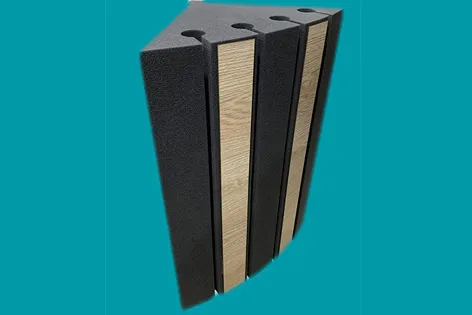
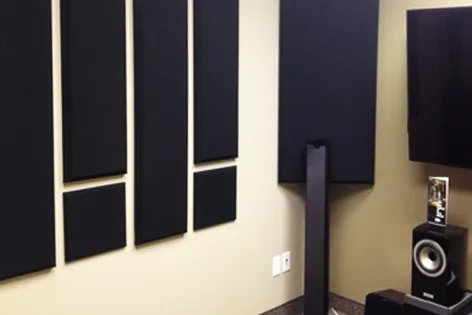
Low-frequency sound waves, often challenging to address with standard treatments, find their match in bass traps. These specialized acoustic elements are designed to control and absorb the deep tones that can otherwise distort recordings. Placed strategically in corners and areas prone to bass buildup, bass traps ensure that the studio space remains sonically balanced, allowing for the accurate reproduction of low frequencies without compromising overall sound quality.
Investing in these materials for soundproofing as part of Acoustic Insulation for Recording Studios is an investment in the purity of sound. Whether it’s the robust mass of MLV, the precision of acoustic panels, or the targeted control of bass traps, each material plays a crucial role in fortifying the studio environment, creating an acoustically optimized space for artists and recording professionals alike.
2. Isolation Techniques
a. Decoupling:
This technique involves breaking the structural connection between the studio and the building itself. By doing so, vibrations are hindered from traveling through walls and floors. Decoupling is like introducing a buffer zone that isolates the studio environment, allowing artists to focus on their craft without the intrusion of external noises. This method effectively contributes to the overall soundproofing, creating a cocoon of tranquility where the nuances of music can be captured with precision.
b. Double Stud Walls:
The creation of double stud walls introduces an additional layer of defense against sound transmission. This technique involves building two separate walls with an air gap in between. This gap acts as a barrier that further diminishes the passage of sound waves. The synergy between the two walls and the air pocket enhances the studio’s ability to repel external noises, ensuring that the recording space remains a sanctuary of uninterrupted creativity. The use of double stud walls is a cornerstone in the strategic application of Acoustic Insulation for Recording Studios.
c. Sealing Gaps:
A seemingly simple yet crucial technique is the thorough sealing of gaps, cracks, and openings in the studio structure. Sound has a cunning way of finding paths of least resistance, and any unsealed gaps can be conduits for unwanted noise leakage. By meticulously sealing these openings, the studio becomes a hermetically sealed environment, fortifying its resilience against external disruptions. This attention to detail in sealing gaps is an elemental practice in the holistic approach to Acoustic Insulation for Recording Studios.
In essence, the combination of decoupling, double stud walls, and gap sealing creates a multi-layered defense system that ensures the studio remains an oasis of sound purity. These isolation techniques, provide artists and recording professionals with an environment where the artistry of sound can thrive undisturbed.
3. Ceiling and Floor Insulation
a. Ceiling Clouds and Suspended False Ceiling:
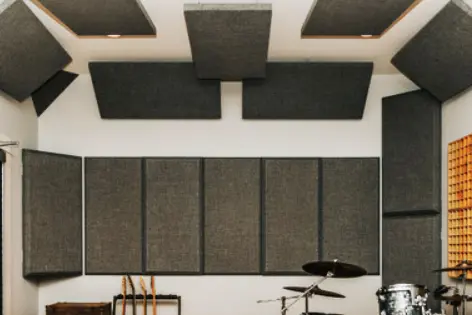
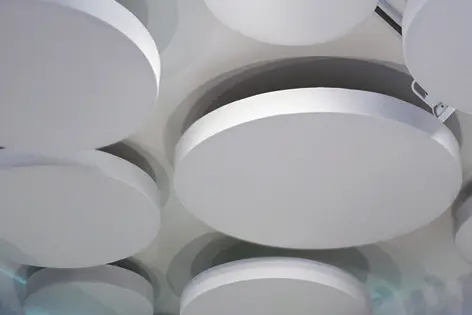
An ingenious method to enhance acoustics involves the installation of ceiling clouds—baffles or suspended panels that gracefully hang from the ceiling. These clouds or false ceiling system serve a dual purpose. Firstly, they act as absorbers, efficiently capturing and dampening sound reflections within the room. This targeted absorption minimizes echoes and reverberations, creating a controlled sonic environment. Secondly, the visual aesthetic of ceiling clouds adds an artistic touch to the studio space. The incorporation of ceiling clouds is a nuanced application of Acoustic Insulation for Recording Studios, where functionality merges seamlessly with design, providing a holistic solution to elevate the recording experience.
b. Carpeting:
The impact of sound extends beyond airborne reflections, often manifesting as impact noise on floors. The introduction of carpets or rugs to the studio floor is a pragmatic approach to address this concern. Beyond the softness and comfort they bring to the space, carpets serve as effective sound absorbers, reducing sound reflections that might bounce off hard surfaces. This is particularly crucial in spaces where musical instruments or recording equipment may be in direct contact with the floor. Carpeting becomes an integral element of Acoustic Insulation for Recording Studios, contributing to a more sonically controlled environment while simultaneously enhancing the studio’s comfort and aesthetics. Click on the following link for more details and Tips related to Soundproofing for Floors.
Conclusion
When it comes to making good recording spaces, having the right Acoustic Insulation for Recording Studios is super important. From heavy Mass-Loaded Vinyl (MLV) that keep the outside noise at bay to aesthetically pleasing false ceiling, acoustic wall panels and carpets – that deal with echoes and noise. Every part works together to make things sound good and look good too.
Tricks like decoupling and double stud walls add extra protection, making a strong shield against annoying sounds. It’s not just about stopping noise; it’s about making a special place for music to be itself. With all these careful choices, artists can feel surrounded by the true, pure essence of sound in their well-designed Recording studios.
FAQs (Frequently Asked Questions)
Question: Why is acoustic insulation important for recording studios?
Answer: Acoustic Insulation for Recording Studios is crucial to keep unwanted external noises out and prevent sound leaks, ensuring a clean and undisturbed recording environment. It also helps in eliminating any kind of noise and reverberation present in the room. Making the sound crisper and clearer.
Question: What materials are commonly used for soundproofing in recording studios?
Answer: Mass-Loaded Vinyl (MLV), acoustic panels, and bass traps are popular choices for Acoustic Insulation and soundproofing in recording studios. The right combination of materials and techniques helps in effectively reducing sound transmission and enhancing internal acoustics.
Question: How do ceiling clouds contribute to acoustic insulation?
Answer: Ceiling clouds, hanging from above, absorb sound reflections, adding to the overall acoustical control in the studio, a key aspect of effective Acoustic Insulation for Recording Studios.
Question: Can I install acoustic insulation myself, or do I need professional help?
Answer: While some elements like acoustic panels may be DIY-friendly, consulting with professionals for a comprehensive assessment and application of Acoustic Insulation and soundproofing is advisable for optimal results.
Question: Is acoustic insulation only about stopping sound from outside, or does it improve the sound inside the studio too?
Answer: Acoustic Insulation for Recording Studios is a dual-purpose solution. It not only prevents external disturbances but also enhances internal acoustics, reducing echoes and improving the overall sound quality within the studio space.
About the Author
Contact us for more details regarding Acoustic Treatment
Address
#6, 10th B Cross, Jayswal Center, KHB Main Road, Kaveri Nagar, Kanakanagar, RT Nagar Post, Bangalore – 560032
Mobile Number
+919008400702
+919945034989
Email Address
anil@jayswalgroup.com
sales@jayswalgroup.com